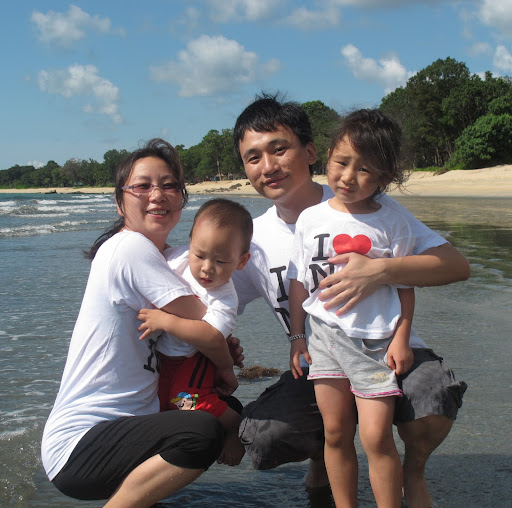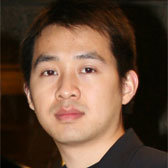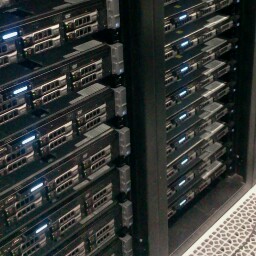Dawei Zhang
age ~58
from Houston, TX
- Also known as:
-
- Zhang Dawei
- David D Zhang
- Da Wei Zhang
- Dawie Chang
- Zhang Da Wei
- Phone and address:
-
4030 Belle Park Dr, Houston, TX 77072
(281)5759018
Dawei Zhang Phones & Addresses
- 4030 Belle Park Dr, Houston, TX 77072 • (281)5759018
- 4030 Belle Park Dr APT 4030, Houston, TX 77072 • (832)5991706
- Libertyville, IL
- Naperville, IL
- 2530 40Th St, Chicago, IL 60632
- South El Monte, CA
Us Patents
-
Method For Beam Reporting For Multi-Trp Transmission Schemes
view source -
US Patent:20220369123, Nov 17, 2022
-
Filed:Jan 14, 2021
-
Appl. No.:17/438873
-
Inventors:- Cupertino CA, US
Haitong Sun - Irvine CA, US
Wei Zeng - San Diego CA, US
Dawei Zhang - Saratoga CA, US
Weidong Yang - San Diego CA, US
Yakun Sun - San Jose CA, US
Qiming Li - Beijing, CN
Jie Cui - San Jose CA, US
Hong He - Cupertino CA, US
Chunhai Yao - Beijing, CN -
International Classification:H04W 16/28
H04W 24/10
H04B 17/336 -
Abstract:Apparatuses, systems, and methods for beam reporting to facilitate multiple transmission and reception points, multi-TRPs, transmission schemes. A UE may receive, from a base station a configuration to report a beam quality based on at least one of a first reporting scheme and a second reporting scheme or a configuration of measurement resources for each TRP of a plurality of TRPs. The UE may report the beam quality based on the configuration or L1 measurements for multiple beam pairs and a recommended and/or assumed transmission scheme based on the configured measurement resources. The first reporting scheme may include the UE reporting at least one L1 measurement for multiple beams and the second reporting scheme may include the UE reporting at least one L1 measurement for multiple beam pairs. The recommended and/or assumed transmission scheme may be a non-coherent-joint transmission (NC-JT) transmission scheme and/or a single frequency network (SFN) transmission scheme.
-
Listen Again After Talk For Broadcast/Multi-Cast Communications
view source -
US Patent:20220312551, Sep 29, 2022
-
Filed:Jun 16, 2022
-
Appl. No.:17/842123
-
Inventors:- Cupertino CA, US
Haitong Sun - Irvine CA, US
Wanping Zhang - San Jose CA, US
Wei Zeng - San Diego CA, US
Pengkai Zhao - San Jose CA, US
Dawei Zhang - Saratoga CA, US
Wei Zhang - Santa Clara CA, US
Ping Wang - San Jose CA, US
Sami M. Almalfouh - San Jose CA, US
Johnson O. Sebeni - Fremont CA, US -
International Classification:H04W 88/06
H04W 72/04
H04W 72/10
H04W 74/08 -
Abstract:Apparatuses, systems, and methods for a wireless device to perform methods to implement mechanisms for performing a listen again after talk procedure to detect collisions over an access medium. The wireless device may determine a frequency and configuration of modified transmission frames for transmission over an access medium (licensed or unlicensed) and may further determine a timing of the modified transmission frames within a transmission occasion. The wireless device may detect, during a listening period of the modified transmission frame, a collision and may adjust, based, at least in part, on the detected collision, a remaining transmission schedule for the transmission schedule and/or LBT parameters.
-
V2X Sidelink Channel Design
view source -
US Patent:20210385804, Dec 9, 2021
-
Filed:Nov 28, 2019
-
Appl. No.:17/059196
-
Inventors:- Cupertino CA, US
Haitong Sun - Irvine CA, US
Hong He - Cupertino CA, US
Wei Zeng - San Diego CA, US
Weidong Yang - San Diego CA, US
Yushu Zhang - Beijing, CN
Chunhai Yao - Beiling, CN
Dawei Zhang - Saratoga CA, US
Yuchul Kim - Santa Clara CA, US -
International Classification:H04W 72/04
H04L 5/00
H04W 4/40 -
Abstract:Embodiments are presented herein of apparatuses, systems, and methods for performing vehicle-to-everything sidelink communication. A wireless device may receive vehicle-to-everything resource pool configuration information and sidelink control information. A number of resource elements allocated for a vehicle-to-everything physical sidelink shared channel may be determined based at least in part on the resource pool configuration information and the sidelink control information. A transport block size for the vehicle-to-everything physical sidelink shared channel may be determined based at least in part on the number of resource elements allocated for the vehicle-to-everything physical sidelink shared channel. A low density parity check base graph may be selected for the vehicle-to-everything physical sidelink shared channel based at least in part on the determined transport block size.
-
Downlink Control For Multi-Trp Transmissions
view source -
US Patent:20210100022, Apr 1, 2021
-
Filed:Sep 17, 2020
-
Appl. No.:17/024215
-
Inventors:- Cupertino CA, US
Haitong Sun - Irvine CA, US
Wei Zeng - San Diego CA, US
Hong He - Cupertino CA, US
Yuchul Kim - Santa Clara CA, US
Dawei Zhang - Saratoga CA, US
Haijing Hu - Beijing, CN
Yakun Sun - San Jose CA, US -
International Classification:H04W 72/12
H04W 72/04
H04L 1/00 -
Abstract:Apparatuses, systems, and methods for providing downlink control for multi-TRP transmission. A cellular base station may provide a downlink control information transmission to a wireless device scheduling downlink transmissions to the wireless device from multiple transmission reception points. The downlink control information may include information that can be used by the wireless device to determine any or all of physical resource block bundling sizes, frequency domain resource allocations, modulation and coding schemes, redundancy versions, phase tracking reference signal configurations, and any of various other possible types of configuration information for the downlink transmissions. The wireless device may receive the downlink transmissions from the plurality of transmission reception points in accordance with the downlink control information.
-
Traffic-Rate Based Branch Deactivation For Ue Power Efficiency In A Dual-Connectivity Mode
view source -
US Patent:20210051767, Feb 18, 2021
-
Filed:Aug 15, 2019
-
Appl. No.:16/968846
-
Inventors:- Cupertino CA, US
Fangli XU - Beijing, CN
Haitong Sun - Irvine CA, US
Sriram Subramanian - Santa Clara CA, US
Vishwanth Kamala Govindaraju - Mountain View CA, US
Johnson O. Sebeni - Fremont CA, US
Dawei Zhang - Saratoga CA, US
Hong He - Cupertino CA, US
Yuchul Kim - Santa Clara CA, US -
International Classification:H04W 88/10
H04W 88/02
H04W 76/15
H04W 76/27
H04W 72/04
H04W 24/08 -
Abstract:A user equipment (UE) device may reside in a state of dual connectivity with a master cell group (MCG) and a secondary cell group (SCG), wherein the radio access technologies of the MCG and the SCG are different. While in the dual connectivity state, the UE device may transition to a mode of reduced activity (e.g., processing and/or RF activity) relative to the secondary cell group (SCG) in order to save power, e.g., when traffic flow via the SCG is below a threshold, or when scheduling activity on the SCG is low. Various mechanisms may be employed to reduce activity, e.g., mechanisms such as reduction of beam monitoring, deactivation of secondary cells of the SCG, reduction of number of active antenna elements, employment of longer periods for periodic measurement and reporting processes, etc.
-
Ue Initiated Beam Management Procedure
view source -
US Patent:20200163073, May 21, 2020
-
Filed:Jan 22, 2020
-
Appl. No.:16/749553
-
Inventors:- Cupertino CA, US
Haitong Sun - Irvine CA, US
Zhu Ji - San Jose CA, US
Yuchul Kim - Santa Clara CA, US
Beibei Wang - Cupertino CA, US
Wei Zhang - Santa Clara CA, US
Wei Zeng - San Diego CA, US
Jia Tang - San Jose CA, US
Tianyan Pu - Cupertino CA, US
Sami M. Almalfouh - San Jose CA, US
Johnson O. Sebeni - Fremont CA, US
Dawei Zhang - Saratoga CA, US -
International Classification:H04W 72/04
H04W 24/10
H04B 7/08
H04B 7/06 -
Abstract:Apparatuses, systems, and methods for a wireless device to perform user equipment (UE) initiated beam management procedures with a base station or gNB. A wireless device in communication with a 5G base station may detect degradation in the pair of transmit and receive beams between the gNB and the device. The device may select a preferred beam management procedure and indicate the preference to the gNB.
-
Reduced Power Consumption By Obtaining Time Domain Resource Allocation Patterns In Advance Via Additional Signaling
view source -
US Patent:20200145924, May 7, 2020
-
Filed:Sep 25, 2019
-
Appl. No.:16/582563
-
Inventors:- Cupertino CA, US
Haitong Sun - Irvine CA, US
Dawei Zhang - Saratoga CA, US
Yuchul Kim - Santa Clara CA, US
Zhu Ji - San Jose CA, US
Wei Zeng - Cupertino CA, US
Wei Zhang - Santa Clara CA, US
Ping Wang - San Jose CA, US
Sreevalsan Vallath - Dublin CA, US -
International Classification:H04W 52/02
H04W 72/04 -
Abstract:A device may obtain, through wireless signaling from a network, a time-domain wireless-resource allocation (TWRA) pattern allocated to the device by the network and corresponding to a future time interval (TTI) for which the device has not yet decoded corresponding control information. This enables the device to conduct wireless communications during the TTI using resources allocated according to the obtained TWRA pattern, without first having to decode control information to identify the TWRA pattern. The device may obtain the TWRA pattern by obtaining an indication from the network that the TWRA pattern remains associated with future wireless communications of the device until indicated otherwise by the network, and/or by transmitting to the network an indication of preferred parameters associated with the future wireless communications and the TWRA pattern, and/or by transmitting to the network a request to have the network change from a different TWRA pattern to the TWRA pattern.
-
Listen Again After Talk For Broadcast/Multi-Cast Communications
view source -
US Patent:20200107399, Apr 2, 2020
-
Filed:Sep 23, 2019
-
Appl. No.:16/578528
-
Inventors:- Cupertino CA, US
Haitong Sun - Irvine CA, US
Wanping Zhang - San Jose CA, US
Wei Zeng - San Diego CA, US
Pengkai Zhao - San Jose CA, US
Dawei Zhang - Saratoga CA, US
Wei Zhang - Santa Clara CA, US
Ping Wang - San Jose CA, US
Sami M. Almalfouh - San Jose CA, US
Johnson O. Sebeni - Fremont CA, US -
International Classification:H04W 88/06
H04W 74/08
H04W 72/04
H04W 72/10 -
Abstract:Apparatuses, systems, and methods for a wireless device to perform methods to implement mechanisms for performing a listen again after talk procedure to detect collisions over an access medium. The wireless device may determine a frequency and configuration of modified transmission frames for transmission over an access medium (licensed or unlicensed) and may further determine a timing of the modified transmission frames within a transmission occasion. The wireless device may detect, during a listening period of the modified transmission frame, a collision and may adjust, based, at least in part, on the detected collision, a remaining transmission schedule for the transmission schedule and/or LBT parameters.
Resumes

Dawei Zhang
view sourceLocation:
Houston, TX
Work:
Robert Bosch Battery Systems Llc. Nov 2018 - Jun 2019
Electrochemistry Intern
Electrochemistry Intern
Education:
Stanford University 2016 - 2018
Master of Science, Masters
Master of Science, Masters

Dawei Zhang
view sourceName / Title
Company / Classification
Phones & Addresses
President
ABC Aero Parts, Inc
Whol Transportation Equipment
Whol Transportation Equipment
13576 Plascencia Ct, Duarte, CA 91706
Director
SZECHUAN CITY INC
Chinese Restaurants · Restaurants
Chinese Restaurants · Restaurants
5314 Telephone Rd, Houston, TX 77087
4030 Belle Park Dr, Houston, TX 77036
(832)8313900
4030 Belle Park Dr, Houston, TX 77036
(832)8313900
President
YI WORLD, INC
Business Services at Non-Commercial Site · Nonclassifiable Establishments
Business Services at Non-Commercial Site · Nonclassifiable Establishments
18988 Barroso St, Rowland Heights, CA 91748
1214 Galemont Ave, Whittier, CA 91745
106 N Almansor St, Alhambra, CA 91801
1214 Galemont Ave, Whittier, CA 91745
106 N Almansor St, Alhambra, CA 91801
President
MARS INT'L ENTERPRISES, INC
951 S Meridian Ave, Alhambra, CA 91803
President
SUNRY INTERNATIONAL (L.A.), INC
402 W Grand Ave #C, Alhambra, CA 91801
President
SINA PLASTICS INC
9835 Max Shapiro Way, South El Monte, CA 91733
Principal
Mars International Enterp
Whol Lumber/Plywood/Millwork
Whol Lumber/Plywood/Millwork
951 S Meridian Ave, Alhambra, CA 91803
PO Box 812, Rosemead, CA 91770
PO Box 812, Rosemead, CA 91770
Googleplus

Dawei Zhang
Education:
National University of Singapore

Dawei Zhang
Education:
King's College London - MSc Advanced Computing

Dawei Zhang

Dawei Zhang

Dawei Zhang

Dawei Zhang

Dawei Zhang

Dawei Zhang
Flickr
Myspace

Dawei Zhang Zhou
view source
DaWei Zhang
view source
Dawei Zhang
view source
Dawei Zhang
view source
Dawei Zhang
view source
Dawei Zhang
view source
Dawei Zhang
view source
Dawei Zhang
view sourceYoutube
Get Report for Dawei Zhang from Houston, TX, age ~58









